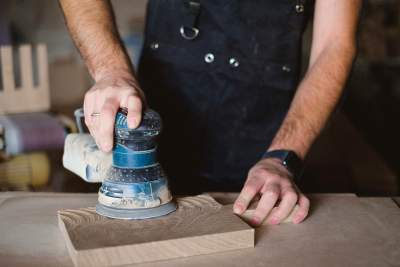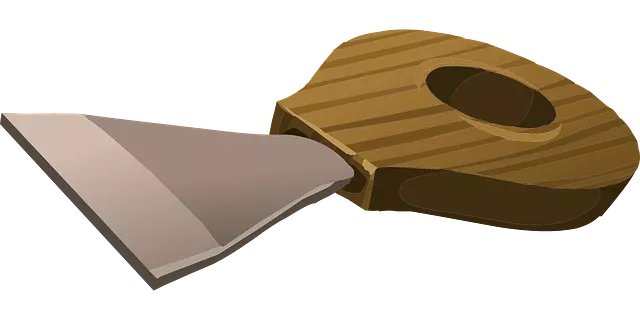Removing paint from wood without using chemicals
One of the biggest frustrations I have with DIY is using toxic chemicals. In this post, we will show you how to remove paint from wood without chemicals. To remove paint from wood, you need to use strong solvents like turpentine, benzine or paint stripper. However, you can also use a home remedy to remove paint from wood. To do this, apply a mixture of one part vinegar and two parts water to the piece of wood. Leave the solution for a few hours and then wash it off with warm water.
Scraping and sanding

In this procedure, unwanted paint is scraped and sanded off. You have several options that you can use for sanding, such as a power sander or a scraper. The natural method removes the top layer of paint. Be careful not to damage the layer of wood underneath the wood paint.
Scraping and sanding are ideal for do-it-yourselfers. When using sandpaper, it is difficult to maintain pressure. The sandpaper must be 150 grit, and the finish comes with 220 grit. More pressure will damage the wood. Clean the surface before sanding. Use detergent and give the surface time to dry.
Coarse and low-grit sandpaper is ideal for the process as it is quick and effective to use. Scrap off the paint after heating. Use 80-grit sandpaper to sand the surface. Get rid of dust and debris before you give the surface a second round of sanding. Give the wood surface the third round of sanding after wiping off the dust. Clean the surface with a rag soaked in water.
Sanding lead paint is dangerous, and it produces toxic lead dust into the air. Using an electric sander indoors is not safe as well. Sanding is affordable since it uses minimal tools, and it is an easy process as well. Put on a mask to protect yourself from dust. Coarse sandpaper is your starter.
Change of grain attracts change of sandpaper from coarse to medium. Wrap the sandpaper around the wood surface. Wet and dry your sandpaper to reduce the amount of dust. If you intend to varnish your wood, avoid adding water.
That process allows the absorption of the dust paste by the grain. That requires more energy to remove. Allow the wood to dry after the wetting process. Hand sanding is not ideal for a carved or shaped piece of wood, and it results in flattening the detailed part.
Use a paint scraper

A paint scraper is a manual tool that gets rid of paint from wood. It is handy, and that makes it easy to use in corners and tight spaces. The drill comes with a metal brush and that allows it to remove paint on the hardwood.
The brush moves back and forth against the surface. Low speeds work better. A model with depth controls allows you to hit the surface in light or deep mode—wood pieces scraper scraps off the existing paint.
However, it takes time and requires a lot of energy, and that is straining your hands. Since the scrapers come in different forms, choose the one that suits your task. Straight scrapers are easy to use and efficient, and however, softened paint comes off easily.
Curved edges on scrappers are better on curves and corners. Plastic handles make the scrapper comfortable to use, and they allow you to apply more pressure. Using a paint scraper is ideal for a thin layer of paint.
Curve blade scrapers get insider corners, unlike straight scrappers. A tough, rigid tool is more effective, and it withstands a lot of pressure. Remove lead paint only when you are a recipient of proper training. Focus on making a flat surface, then remove all the surface paint. At this point, you are allowed to scrap against the grain. Scrap lightly since the chances of damaging wood are high. Start with the edges, then areas that scrappers are hard to reach.
Use a heat gun
An electric heat gun is quick and safe in removing paint from wood, and it does not leave a mess after the operation. The heat gun is for indoor and outdoor paints, and it also works on wood finishes such as latex and oil-based finishes. However, it does not remove stains. Heating the wood paint with a heat gun makes the process faster and easy.

If you touch the nozzle during operation, you burn yourself. It gets hot during the process, and a smaller nozzle works when the heat has to be localized. Test the gun on samples before use so that you familiarize yourself with the tool. They are specific on certain activities, and you have to master that to ensure safety and maximum performance.
Change the nozzle when necessary but let the old one cool for 5 minutes. The gun has to warm up for 45 seconds before running. The nozzle has to be an inch or two away from the surface. Move the heat gun back and forth slowly over a small area. The paint starts blistering, and that is when you have to scrap the wall paint using a knife.
The knife is substituted by a scraping tool when not available. Oil-based paints tend to make bubbles, and latex paints soften and melt away. Do not lose track of time. The scraping tool works in strokes, and each stroke has to lift a certain amount of surface paint. At this point, do not switch off the gun.
Keep the nozzle moving together with the scrapper in a forward motion. Remove the softened paint before it dries up. The heat from the gun is dangerous, and that is why you have to keep it off the handle of the scrapper and your fingers. Remove the paint stuck on the knife. The paint scrapings cause fire or burns. Be careful where they are landing.
Hot Water and Scrubbing
Boil a gallon of water as you prepare to remove paint from the wood. Take the item in the boiling water and scrub off the wood paint using a soft-bristled brush. Wear protective gloves so that the heat will not get to your hands.
What boiling water does to the paint is breaking the bond between the wood paint and the wood surface. That allows the wood paint to strip off naturally, and that is an easy task to complete. Take water, baking soda, a gallon, tongs, a brush, and a flexible scraper. Take a pot and fill water that is enough to cover your wood.
Add a quarter cup of soda and boil the water. Using thongs, add the painted items, and make sure they do not overlap. Reduce the heat and leave the wood items for 15 minutes. Use an old toothbrush if you do not have a brush and if the paint is still attached to the wood item, use clean water with soda.
Use a wire brush
Using a wire brush to remove paint from wood is handy and gives you quick results. A wire brush is for small and delicate wood objects, and it is convenient to use in homes, and it is easy to use in tricky spaces like corners and edges.
Old pieces of furniture are easy to work on using the brush. For your paint removal project, you are allowed to use a wire brush, and the projects include table legs and flat surfaces. For best results, combine the wire brush with a paint remover solvent or paint thinner.
Apply a thin layer of paint thinner on the wire brush. As you scrape off the paint, it dissolves right away on the brush, and it loosens the bond of the wood paint that you peel off from the wire brush. To pick the best wire brush, consider what it is made of, the diameter of the wire brush, and the filament confinement of your wire brush.
You should also see our How to Get Paint Off Hardwood Floors.
- Grain and Sheen: Teak Oil versus Danish Oil Uncovered - January 10, 2024
- The Cherry on Top: Crafting the Perfect Cutting Board - January 9, 2024
- Polyurethane Water-Based vs Oil-Based: Choosing the Right Finish - January 8, 2024
